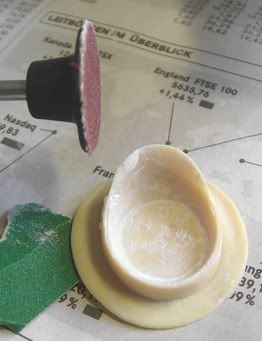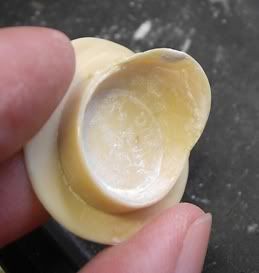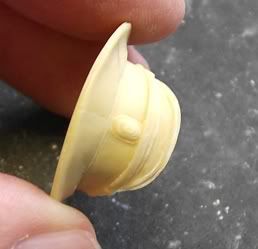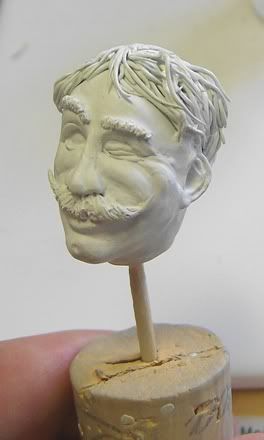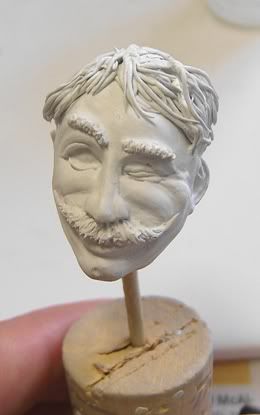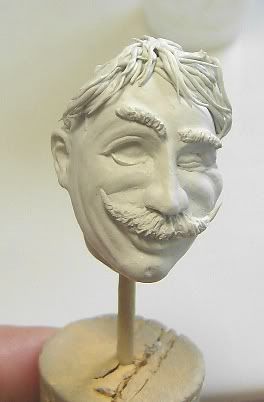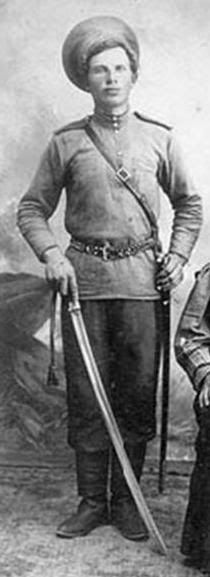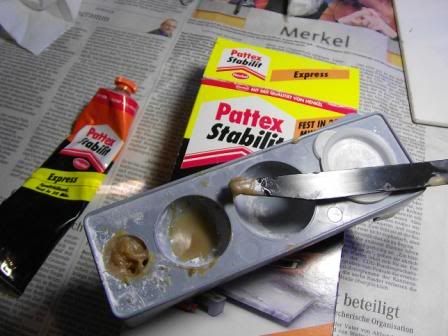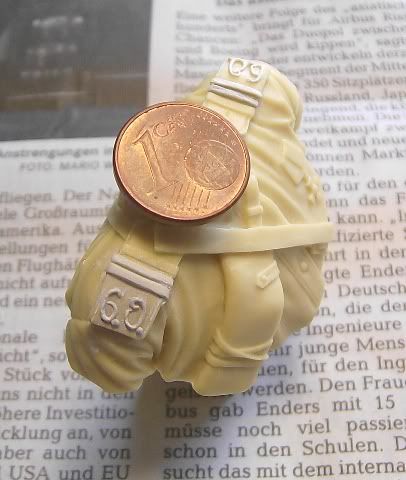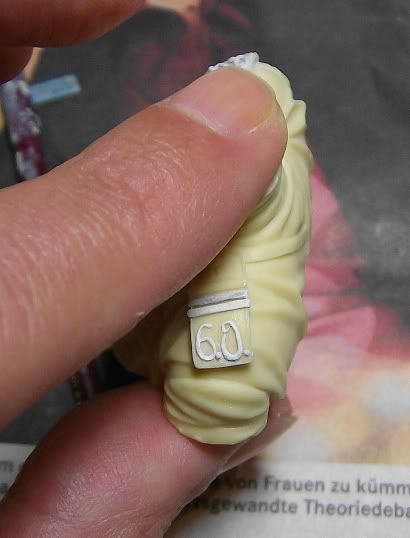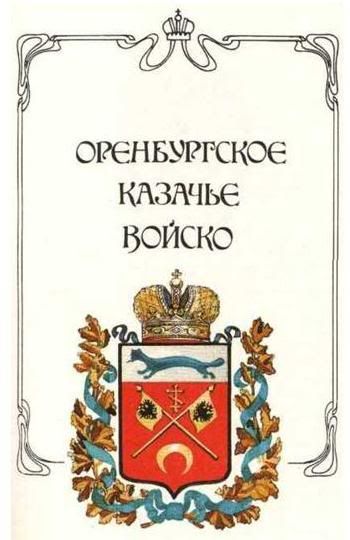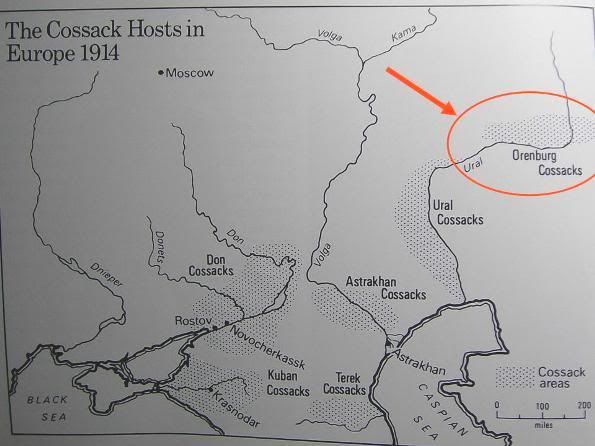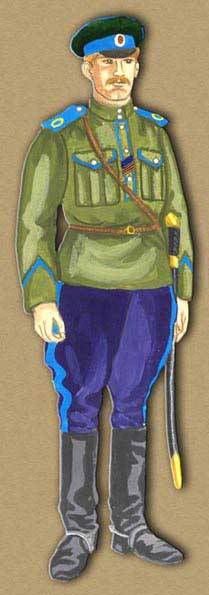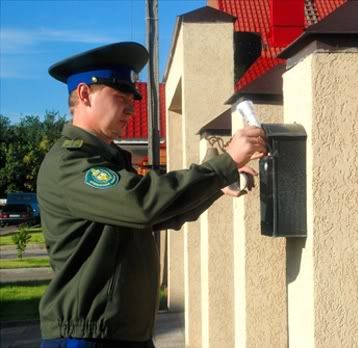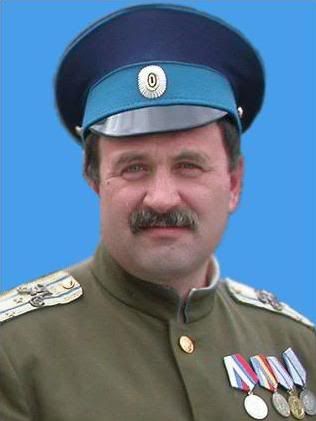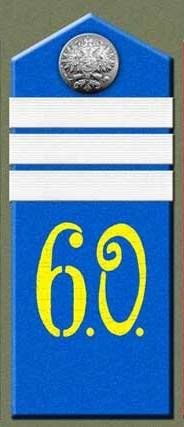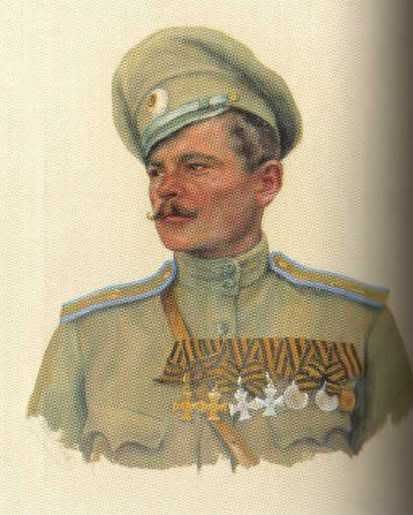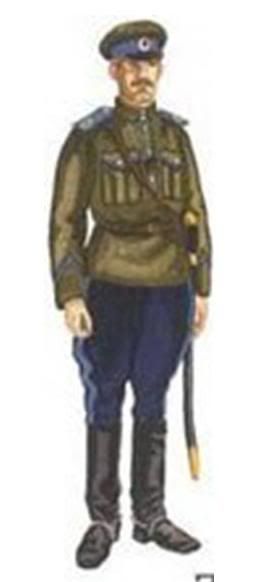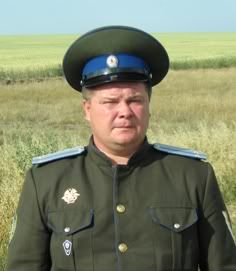29. Day, 18. November, 2010
Well, today it goes on with the also arrangement of the shoulder pieces.
The today's part contains a lot of theory and details to the Cossack's uniform! Who would not like to read everything, had to go completely down durchscrollen – then there is found my today's day work.
For me the theory is important meanwhile, because already today I must decide in which uniform variation I wants to paint my Cossack later.
Basically one has – according to the instructions of the original bust - the choice between two possibilities.
There would be, on the one hand, the "field uniform" as it should look real to outbreak of war. As an example here once again the wonderfully painted bust variation of Mark (Gothicgeek) at this forum:
Here Cyrillic "D" for "Donskoi Kasatschij Woiska" (Don Cossack-host) and a "5" as regimental number.
Here an explanatory sketch:
Every single Cossack-Host had his own Cyrillic letter, because the uniform – was standardised at least after the theory–.
Because the Don-Cossacks Cyrillic "D" claimed for themselves, the Russian Dragoons had to make do, by the way, with Latin "D" and were the only Russian troop unit which carried no Cyrillic name!
The second possibility to show our hero would be the peace uniform, during the whole war – in parallel with the field uniform! - was also carried.
The model photo which also shows a Don-Cossack (of the 16th regiment) was taken up, by the way, in 1918 …:
The explanatory sketch shows the differences:
The rank badges were silver, shoulder pieces and cap showed the colours of the Don-Cossack-host (Blue / red). Because the troop unit was already called by these colours, was lost Cyrillic "D" to the differentiation.
In the instructions of the original bust to shown orange badges or also dark yellow-coloured rank badges seem to have been used in the reality with the troop only extremely seldom; there are only completely few original documents for this!
The silver badges of the peace uniform seems in big to have been carried furthermore style also during the war.
The numbers and letters on the shoulder pieces which called the unity could be from all possible:
From material cut, painted on with liquid-ink pen, of varnished wood, from brass, from a soft metal similar to aluminium, printed and, and, and …
In addition, one has another umpteen other possibilities for the painting, because what was valid for the Don-Cossacks, it was valid also for all remaining Russian Cossack-hosts with which in each case the war as well as the peace uniform can be shown.
Each of a total of eleven Russian Cossack's armies had his specific colours with the peace uniform like the following listing points …:
Would be still to be added that the Amur-Cossack-host maintained, besides, own naval unities (the so-called "Amur-Fljot") whose affiliated sailor's gap with kosakischen badges carried.
Moreover, there were still the body guard Cossacks („Personal convoy“) which existed of members Terek-and Kubanheere. Their colours were dark red / silver.
However, in the special case of my bust one can show no member Terek-and Kubanheere as well as the body guard, because this one completely different uniform, the famous Tscherkesska with the cartridge loops on the breast carried.
As far as the theory.
In practice there are against it still countless other possibilities of the painting, because a cheerful mix between war uniform and peace uniform in all possible variations was carried on the Cossacks.
Examples pleasingly …?
Here once again the photo of the model of the original bust, Kusma Krjutschkow. On the photo he carries – clearly recognizably – the khaki-coloured cap of the field uniform together with the blue-red-silver epaulets of the peace uniform, indeed, without actually prescribed regimental number...:
On the one hand, the Cossacks now were not necessarily friends of regulations. For them „the sky was high and the czar was wide“ as one says in a saying, and they rather followed own predilections, than to the regulations.
Besides, the regimental numbers were often separated in the field not to betray the troop unit to the enemy.
To the third the German declaration of war met in 1914 Russia absolutely unexpectedly and the troop masses moved rushed and hardly prepared in the field. It was carried what was available.
For this another example:
The next photo shows three soldiers of the same unity and was taken up during the general mobilisation in summer, 1914.
Every soldier carries a different field blouse what one can well recognise by the button strips. One has breast pockets, besides, other and it do not seem different button, horn and metal.
The soldier on the left) does not carry the regimental name on the shoulder pieces, remaining.
The soldier carries on the left the peace cap, his companion on the right the field cap. The standing soldier in the middle wears the old cap without screen which was carried between 1900 and 1907!
As said the Russian soldiers looked so differently at war beginning! During the war this became not better, but the uniform chaos increased rather still.
Also were able the numbers and letters on the shoulder pieces of unity to unity (and also within the same unity!) look absolutely differently!
All that pleases the figure painter, because he gets so practically countless possibilities if he pays attention only a little bit to plausibility.
So – end of the theory!
I have decided, in the meantime to paint a Cossack with a "coloured" mix from peace and field uniform!
So get on with me to regimental number as well as to troop unit name.
And I will paint NO Don Cossack!
Reason:
Almost every figure of a Cossack from this time comes as "a Don Cossack" on the market and/or is painted so.
The Don Cossacks are the best known Unit by far of the Cossack's armies in the west, her uniforms are documented best and her recognition colours – blue and Red – look also good beyond all doubt!
But in this stream I would not like to swim!
I would rather like to show a member one of the Cossack-hosts rather unknown.
Therefore, my Cossack should serve with another unity, the 6th regiment of the Orenburger Cossack-host (Orenburgskoje Kasatschij Wojska!
I have shown this picture You already once – and Long in the middle with the light blue stripes in the trousers and the knife in the boot is such an Orenburger Cossack!
Today so I have for one shoulder piece a tiny "6". And as tiny "O". made …:
Cyrillic "O". was the letter of the Orenburger.
Tomorrow it goes on – and then there is also detailed about the Orenburger Cossacks …
